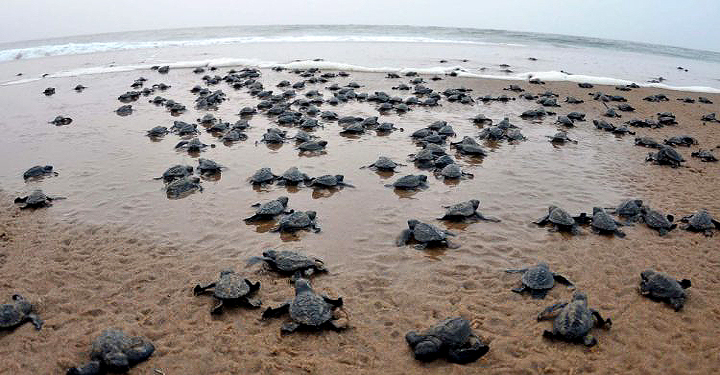Kendrapara: Olive Ridley sea turtles have begun emerging from the swirling waters of Bay of Bengal off Gahirmatha marking the commencement of the mass nesting of this endangered marine species.
Forest personnel on patrolling duty have sighted pairs of turtles on the beach.
The turtle surveying teams spotted hundreds of pairs of turtles along the Gahirmatha coast, which is acclaimed as the world’s largest known nesting ground of these animals, department official said on Saturday.
Apart from Gahirmatha, the threatened aquatic specied also reach the Rushikulya river mouth and Devi river mouth for mass nesting.
Prohibition on fishing has been clamped in Gahirmatha zone to ensure the mating of the marine animals, said Debashis Bhoi, the Gahirmatha forest range officer.
After the end of the mating season most of the male turtles usually return to the sea leaving behind the female turtles to lay the eggs.
The female turtles virtually invade the nesting beaches usually at the dead of the night for laying the eggs, a phenomenon called ‘arribada’.
A female turtle lays usually lays about 120 to 150 eggs and leave the nesting ground to stride back into the deep sea water. Hatchlings emerge after 45 to 60 days but many of the eggs are devoured by the predators.
Besides, eggs are also washed away by sea waves during high tide.
“The eggs are incubated in the nest and grow, sans the mother to emerge as hatchlings. This a rare natural phenomenon as the baby turtles grow without their mother,” Bhoi said.
A ban on fishing in the sea remains in force round the year in Gahirmatha marine sanctuary as the seawater here is the most conducive habitat for these delicate marine species.
The prohibition on fishing was clamped after there was a rise in the mortality rate of mating turtles along the coastal water surface. The gill nets used by the fishing trawlers spell death for the breeding turtles.
The gill nets are made of monofilament and are much larger than the legal size and the turtles get entangled in them for prolonged periods and die of asphyxiation. They also perish in large numbers after being hit by the fast moving propellers of the trawlers, the forest department official said.
The Olive Ridley, so named because of the colour of its shell, has been accorded the schedule 1 status under Wildlife Protection Act for its highly threatened status.
PTI
